Projects
Release mechanisms of aerosols containing Legionella in evaporation cooling systems and significant analytical methods for outbreak management – LegioAir
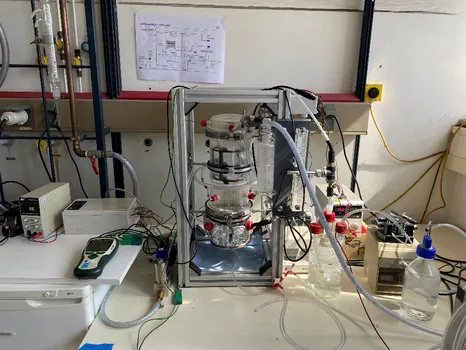
In the last years, several outbreaks of Legionnaire’s disease could be traced back to evaporation cooling systems. There, Legionella in the water can be released through the formation of aerosols. These aerosols can than cause, when inhaled, serious lung diseases like pneumonia. Therefore, it is important to develop suitable sampling and analysis strategies for Legionella in aerosols and to get to know the release mechanism.
Until now, there are no guidelines for the measurement of aerosols in evaporation cooling systems because normally only the process water is analyzed. But it is shown that the number of Legionella in water can differ from them in the aerosols. That is why it is necessary to develop a proper method of collecting and analyzing Legionella in aerosols.
In this project the formation of aerosols containing Legionella is investigated in a bioaerosol chamber. Different collecting devices (Impinger, Impactor and Cyclone sampler) can be tested for their biological sampling efficiency. Afterwards, the Legionella are analyzed with culture-dependent and culture-independent methods). It will be investigated if the culture-independent methods are as appropriate as the standard cultural ones.
In addition, a laboratory cooling system will be installed in the bioaerosol chamber to investigate the influence of process water and aerosols on the building of a biofilm that will contain Legionella and amoebas.
Funding: AiF
The COVID-19 pandemic has kept the world in suspense since the beginnings of 2020. Thorough serosurveillance of reconvalescent patients and vaccinated individuals might be key in the way back to normality. Therefore, we work on the development of immunoas
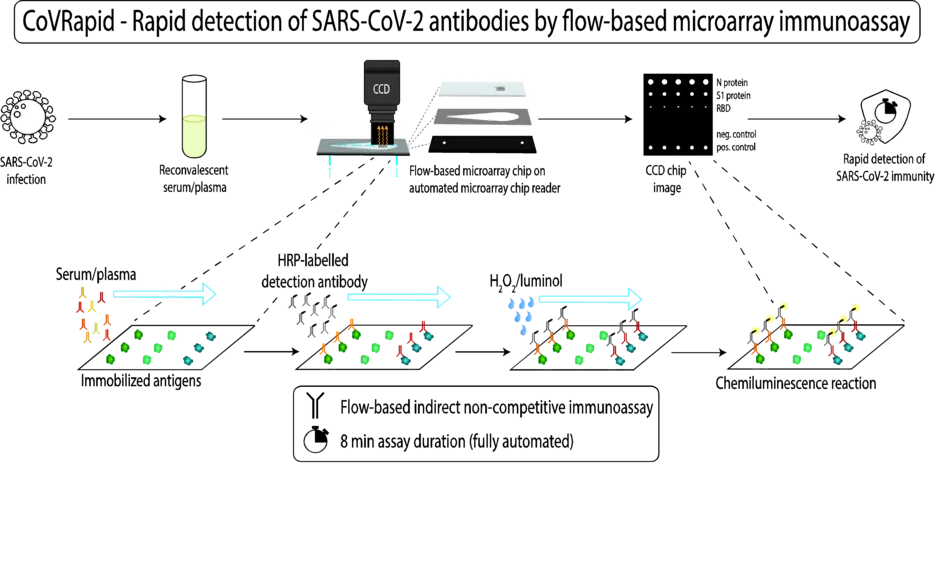
The COVID-19 pandemic has kept the world in suspense since the beginnings of 2020. Thorough serosurveillance of reconvalescent patients and vaccinated individuals might be key in the way back to normality. Therefore, we work on the development of immunoassays for the rapid automated detection of antibodies to SARS-CoV-2.
The world is still threatened by the COVID-19 pandemic, but high hopes are placed in the vaccination, promising immunity and a return to normality. Hence, the monitoring of immunity by antibody tests is highly relevant but commercial tests like ELISAs are often time-consuming, laborious and sometimes exhibit insufficient sensitivity as only one antigen can be considered. We make use of the long-established microarray chips for the automated analysis platform MCR 3 and the more recently developed MCR-R and are developing an indirect, non-competitive microarray immunoassay that allows for the simultaneous detection of IgG and IgM antibodies to SARS-CoV-2 receptor binding domain, spike (S1) and nucleocapsid protein within eight minutes. Future activities in the project will also focus on the quantitative evaluation of test results, the establishment of neutralization assays in microarray format and the rapid adaptation to different antigens, e.g. in case of mutations of SARS-CoV-2.
Funding: BFS (AZ 1438-20C)
IGSSE Project (13.02): REP-MAF
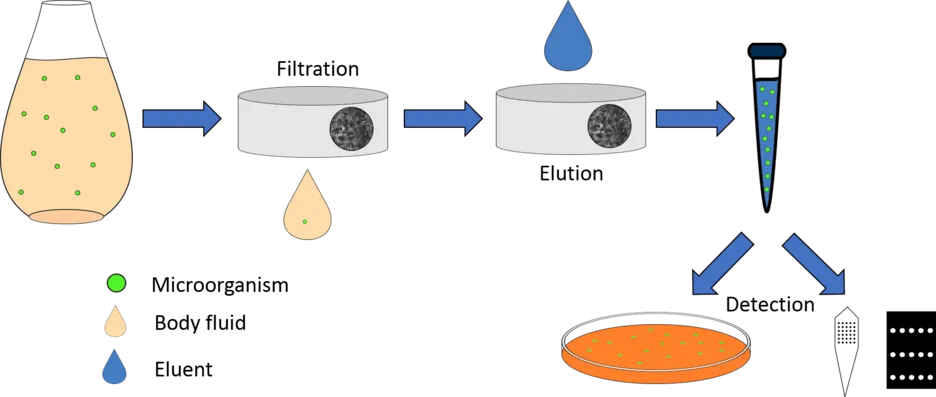
Infections in human body fluids are quite severe, with increasing mortality until treatment. Therefore, a rapid and precise treatment – and consequently, a rapid and precise detection – is essential. By enrichment with monolithic affinity filtration and detection with DNA-based methods, we aim to improve the whole detection process of pathogens causing infection.
In case of an infection in human body fluids, not only fast treatment decides over life and death, but also precise medication is absolutely crucial in respect to antibiotic resistances. In order to achieve this, the causing pathogens – bacteria and fungi – and their potential resistances need to be identified as quickly as possible. The gold standard used are culture-based methods, which need a long time, due to the low concentration of pathogens inside the body fluids. By enrichment of the pathogens using specific affinity linkers on monolithic filters, it is possible to provide a faster analysis. By additional application of a DNA-based method, the heterogeneous asymmetric recombinase polymerase amplification (haRPA) on the MCR 3, enrichment and detection could be performed within one day.
Funding: Deutsche Forschungsgemeinschaft (DFG) through TUM International Graduate School of Science and Engineering (IGSSE)
Synthesis of gold nanoparticles in a 3D hydrodynamic focused microreactor and their application for online chemiluminescence detection
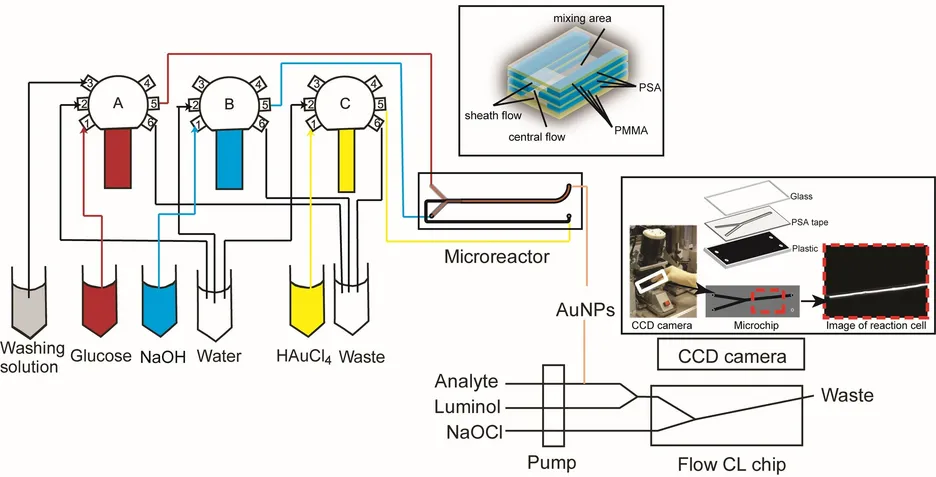
AuNPs have drawn big attention in the CL system for biosensing application. The relationship between catalytic activity and synthesis parameter of AuNPs is uncertain. Therefore, we integrate 3D microreactor with chemiluminescence system for online synthesis of AuNPs and catalyst characterization.
AuNPs have drawn big attention in the CL system with excellent properties, and the catalytic activity of AuNPs depends on size, shape and surface charge property. It is difficult to confirm the optimal condition of AuNPs for a certain CL system. A 3D hydrodynamic focused microreactor was used to synthesize AuNPs through a single-phase reaction at room temperature. The synthesis was coupled directly with a CCD camera with luminol-NaOCl reaction for catalyst characterization. All operations were performed in an automatic way. The property of AuNPs was easily controlled by tuning concentration of reagents in a 3D microreactor during synthesis. Effect of aggregation and surface property of AuNPs on catalytic activity can also be monitored. For further application, synthesized AuNPs can be bound with antibody or aptamer for specific detection of analytes.
Funding: China Scholarship Council
Development of a multiplex algae toxin immunoassay for the monitoring of algal blooms in surface water
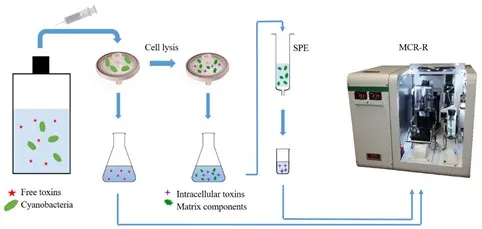
The increased growth of cyanobacteria is favored by climate change as well as the eutrophication of water bodies and have been observed more frequently in recent years. Often, potential dangers from algal blooms are not discovered until accidents have occurred. To prevent this, it is essential to develop an early warning system for increased algal growth and the release of algal toxins.
Mass propagation of cyanobacteria poses a threat to the environment and human health all over the world by producing a variety of toxic substances that can cause poisoning, allergic reactions and skin irritation. In order to prevent accidents and hazards from cyanotoxins, the European Bathing Water Directive § 8 requires that appropriate monitoring should be carried out for bathing waters whose profile indicates a possible mass propagation of cyanobacteria. It further requires that appropriate managerial action shall be taken as soon as a mass propagation or potential health hazard is detected. Despite these precautions, accidents due to cyanotoxins continue to occur, as experienced in the summer of 2019 at Lake Mandicho. After the death of several dogs, a restriction on the use of the lake was imposed for more than one month. The cause of death of the dogs was clarified weeks later, with the cyanotoxin anatoxin a, identified as the cause. In the case of suspected algal blooms, it is important to quickly gain clarity about the current situation in order to be able to act appropriately. Therefore, a comprehensive and continuous monitoring of the waters is necessary, as well as a fast and reliable method for the identification and quantification of cyanotoxins. To ensure this, in this project a multiplex algal toxin immunoassay will be developed on the platform of the MCR-R, which will be able to quantify different algal toxins simultaneously and within minutes, and therefore guarantee the safety of bathing waters.
Funding: AIF-ZIM (ZF4810901LL9)
Legionella in agricultural exhaust air treatment operations
Legionellen in landwirtschaftlichen Abluftreinigungsanlagen (LiLA)
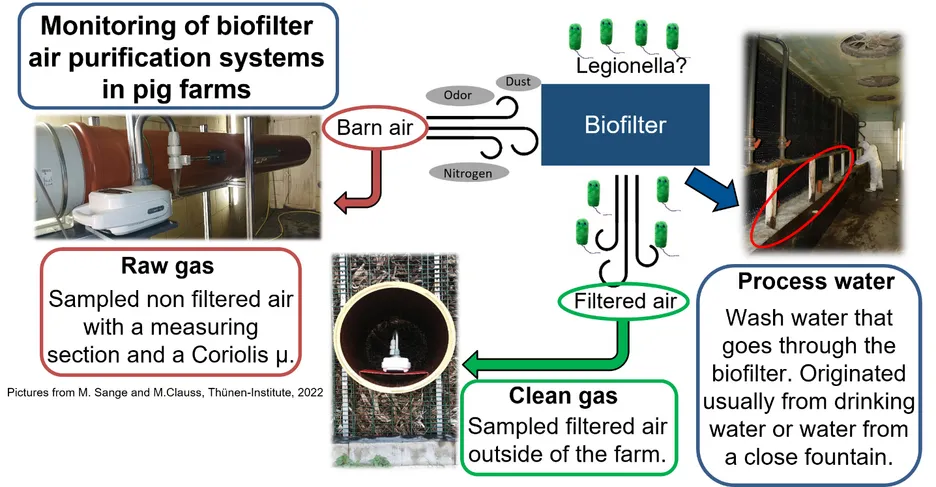
In Germany, over 1.200 agricultural exhaust air purification systems are used in pig or poultry farms. While some exhaust air scrubbers work with chemicals or low pH to prevent microbial growth, biofilters are using an active microbiome for the purification of the barn air. This leads to an ideal growth condition of various bacteria, including airborne human pathogens like Legionella. To understand the potential health risks of Legionella in biofilters, a robust and reliable detection method needs to be developed.
Legionella spp., a group of 2-20 µm large, gram-negative bacteria are found in all kind of freshwater systems. In the last years, increasing number of legionellosis outbreaks, a severe lung disease is a growing challenge for public health. Infection with Legionella spp. usually takes place via aerosols. Therefore, in addition to the shower, cooling towers, evaporative cooling systems where the prevalence of Legionella is already intensively investigated, agricultural exhaust air purification systems can be a potential risk. Biotrickling filters, used in pig farms to remove e.g. odor, dust and nitrogen are working with an active microbiome which results in no possible treatment with biocides. This leads to ideal growth condition of various bacteria, including Legionella. According to the EN ISO 11731:2017 the gold standard for the detection of Legionella is a culturing method. For that, after a long incubation time of 7 – 10 days on selective agar the colony forming units (CFU) can be determined. Research has shown that this approach has a high risk for underestimating the number of infectious bacteria. The reason for that are viable but not culturable Legionella. That´s why upcoming alternative detection methods like molecular biological approaches are becoming increasingly popular. But these methods are often highly influenced by complex matrices or need a laborious experimental setup. For this reason, a fast, reliable and robust assay has to be developed and used for monitoring and quantification of Legionella in biofilters.
Funding: Dieses Projekt wurde aus Mitteln des Bundesministeriums für Ernährung und Landwirtschaft (BMEL) gefördert. FKZ 28N-2-002-02. Laufzeit: 1.8.2020 - 31.7.2023.
Characterization and validation of screening methods for culture-independent detection of Legionella pneumophila in artificial water systems - LegioRapid
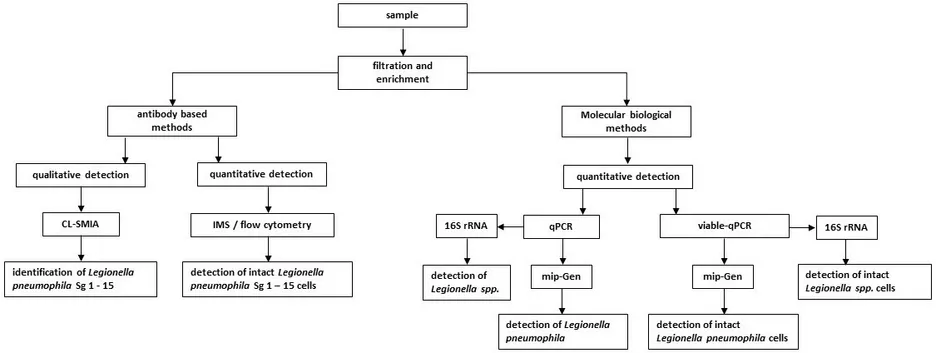
Cooling towers, evaporation coolers and wet separators can be responsible for Legionellosis outbreaks by releasing contaminated bioaerosols over several kilometers. The detection standard is the culture method with several disadvantages like slight growth time, wherefore it does not describe the current statues of such artificial water systems. Because of this, the validation and characterization of culture-independent methods is necessary to improve the screening and detection capability.
Legionella appear normally in our environment, but under certain circumstances they can also contaminate artificial water systems like cooling towers, evaporation coolers and wet separators. The species Legionella pneumophila and especially its serogroup (Sg) 1 is the most pathogenic and common danger for humans. Inhalation of Legionella contaminated bio aerosols can cause bronchial pneumonia called legionnaires’ disease with a mortality rate up to 10%. Rarely, Legionella can also cause outbreaks. For this unfortunate case artificial water systems can be responsible, because of releasing Legionella contaminated aerosols over several kilometers, which can be inhaled by a variety of people. Since 2017 the 42. BImSchV law is in force in Germany, which regulates the water quality of cooling towers, evaporation coolers and wet separators. These systems get screened in regular periods to determine the microbiological exposure with reference to the and intervention values. According to the EN ISO 11731:2017, the most used method to analyse these water samples is the culture method with several disadvantages. Legionella colonies can be counted after 7 - 10 days growing time and this slight growth time rate supports overgrowth with accompanying flora. In addition, Legionella can skip to a so-called viable but non-culturable (VBNC) state, while they are still pathogenic, but can’t be detected via the culture method anymore. The industry is therefore looking for faster and culture-independent screening methods that can describe the current status of artificial water systems, which are not standardized in Germany, yet. For this, our institute developed the chemiluminescence sandwich microarray immunoassay (CL-SMIA) which is a culture-independent screening method for detection and serotyping of Legionella pneumophila so-called LegioTyper. In the project, cultivation-independent methods (molecular biological methods like qPCR and antibody-based methods (flow cytometry and CL-SMIA) are standardized for a better hazard analysis in evaporation coolers and cooling towers.
Funding: BMWE WIPANO-LegioRapid (FKZ 03TN0002A)
www.legiorapid.de
Flow-based microreactor for nanoparticle synthesis and on-line analysis
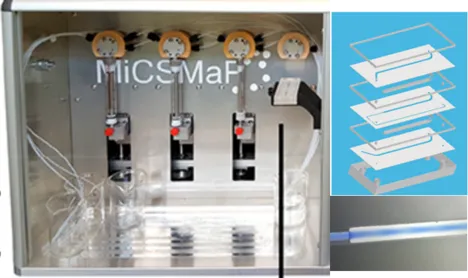
Continuous synthesis of PVP stabilized monodispersed gold nanoparticles using flow-based microreactor
Gold nanoparticles were widely used in bioanalytics because of excellent detection properties and couling capability to antibodies. Synthesis of gold nanoparticles can be done by number of methods. The chemical synthesis by reducing metal salts is a simple process, which requires the mixing of the reagents at well-defined external conditions. The chemical reduction method and the choice of a capping agent depends on variety of parameters that can influence the physical and chemical properties of the resulting particles. To achieve stable nanoparticles with specific size, reaction conditions should be controlled. Therefore, microfluidic reactors with online detection methods are preferable.
Funding: China Scholarship Council and IWC
Finalized projects
DNA microarray for detection of pathogens and antibiotic resistance gene bla(CTX-M) in surface water
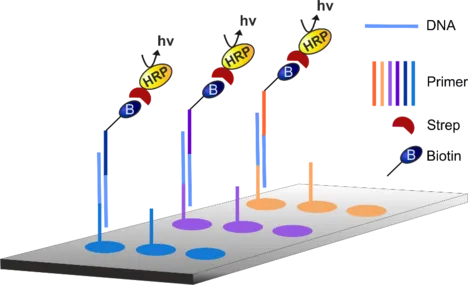
Antibiotic resistance is a problem for treatment of infections worldwide. In surface water, antibiotic resistant bacteria are also present and need to be monitored to assess potential risks and dissemi-nation pathways. Using the developed DNA microarray, we are able to detect pathogenic bacterial species and the widely distributed re-sistance gene blaCTX-M.
Antibiotic resistant bacteria carry antibiotic resistance genes (ARGs) which are responsible for changes within the bacteria. The current gold standard for detecting antibiotic resistance is cultivation followed by PCR which is time consuming and only feasible for culturable bacteria. In environmental samples, however, non-culturable bacteria make up a larger fraction of the total count. To provide faster results the existing heterogeneous asymmetric recombinase polymerase amplification (haRPA) assay on MCR 3 was adapted for the detection of the ARG blaCTX-M, an extended spectrum β-lactamase, as well as for the pathogenic bacteria Klebsiella pneumoniae and Pseudomonas aeruginosa.
Funding: IWC
Dection of antibiotics in liquid matrices by regenerable chemiluminescence microarray immunochips
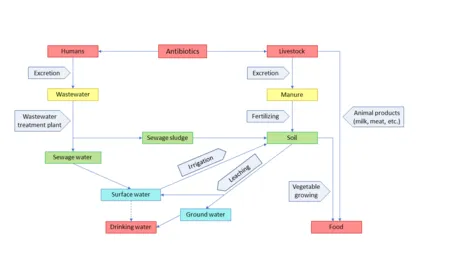
Antibiotics are widely used in both human and veterinary medicine. Via wastewater and manure, they are dispensed to the environment and may end up in drinking water and food. The presence of antibiotics induces the development of resistance genes in bacteria.
Therefore, a fast and cost-effective multi-antibiotic screening method for the monitoring of both animal products (e.g. milk or manure) and environmental waters is required. The established regenerable chemiluminescence microarray immunoassay allows the screening of various antibiotics in a single run. The detection limits can be further reduced by preceding SPE. By means of the automated flow-through analysis platform MCR 3 (GWK Präzisionstechnik, Munich), we have established a regenerable indirect competitive chemiluminescence microarray immunoassay for the simultaneous detection of various antibiotics, e.g. sulfonamides and β-lactams, in liquid matrices. Calibration experiments were carried out for seven sulfonamides. The most sensitive assay was achieved for sulfamethoxazole with a detection limit of 0.1 µg/L. To cover the even lower concentrations of real environmental water samples, a pre-concentration SPE method using Oasis® HLB cartridges (Waters, Milford, CT, USA) will be established.
Funding: Hanns-Seidel-Stiftung and IWC
AIF-ZIM Project (FKZ ZF4456001)
Microarray-based nucleid acid amplification test for mycotoxin-containg bioaerools of in indoor air
To date the most used methods to test for bioaerosols in indoor air are culture-based or microscopy methods which are relatively inaccurate and time consuming. Mycotoxins themselves are detected mainly by chromatography in combination with mass spectrometry which can be done only in specialized analytical laboratories who have not the experiences in quantification of fungi. Therefore, cheaper and faster method are needed to assess the risk of fungi contamination in buildings after e.g. water damages.
Cooperation partner: domatec GmbH
Funding: AIF-ZIM
BMBF project (13N13698): LegioTyper

Culture-independent serotyping of Legionella pneumophila in water, aerosol and urine samples
A rapid bioanalytical method for the detection of Legionella pneumophila will be established. The sandwich microarray immunoassay will detect serogroup 1 to 15 by monoclonal serotyping on the microarray analysis platform MCR 3 in not more than one hour. Patterns of specific microarray signals will be compared by the analysis of environmental (water and bioaerosols) and clinical samples (e.g. urine). Matching signal patterns will give the direct link between an infection and the source that is responsible for a legionellosis outbreak.
Cooperation partners: Technische Universität Dresden, Dresden (TUD); Bayerisches Landesamt für Gesundheit und Lebensmittelsicherheit, Erlangen (LGL); GWK Präzisionstechnik GmbH, München
Funding: Bundesministerium für Bildung und Forschung (BMBF)
Homepage: www.legiotyper.de
IGSSE Project (9.06): MiCSMaP
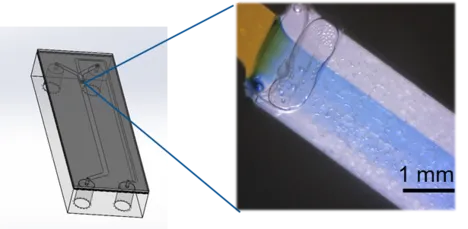
Microreactor with integrated characterization for the synthesis of magnetic nanoparticles.
MiCSMap is an interdisciplinary project founded by the International Graduate School of Science and Engineering (IGSSE) between analytical chemistry, chemical engineering and electrical engineering. Research interests are the synthesis and coating of magnetic nanoparticles in microfluidic reactors with integrated continuous magnetic separation and particle characterization.
Funding: International Graduate School of Science and Engineering at TUM
Cooperation partner: Dr.-Ing. Bernhard Gleich (IMETUM, School of Bioengineering, Technische Universität München)
Development and validation of an immunological screening method for the determination of toxicologically relevant pyrrolizidine alkaloids in herbal tea and related matrices
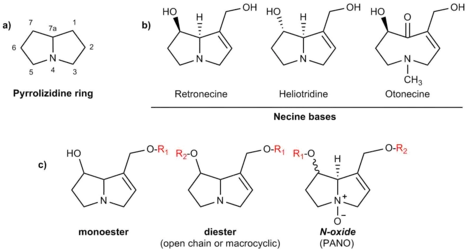
Direct or indirect contamination of human food sources like wheat, milk, eggs, honey, salad, herbals, tea and food supplements with pyrrolizidine alkaloids (PA) are, depending on PA concentration and duration of its intake, supposed to give rise to acute (liver failure) or chronic (pulmonary arterial hypertension, cancer and teratogenic effects) toxicity. Food industries are interested in an in-house method for easy and effective analysis of unprocessed plant resources etc. Bioanalytical methods based on immunological detection of PA are most suitable in this context, as it provides parallel processing of many samples and requires minor trained staffing. Moreover, it is cheap and does not require any costly sample preparation. In order to address food industries demands, the aim of this project is to develop and validate an immunological screening method for the determination of toxicologically relevant PAs in herbal tea and related matrices.
Responsible persons: Prof. Dietmar Knopp and Katharina Stutzer, MSc.
Cooperation partners: Prof. Gareis and Dr. Gottschalk (Veterinary Faculty, Chair of Food Safety, Ludwig-Maximilians-University, Oberschleißheim, Germany)
Funding: FEI – Research Association of the German Food Industry (AiF 19010N)
JPI Water Project (WU1346A): METAWATER
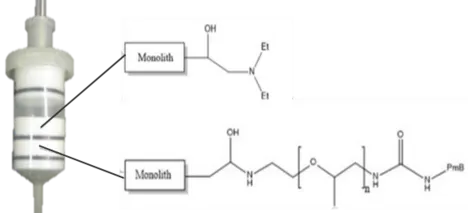
New metagenomics and molecular based tools for European scale identification and control of emergent microbial contaminants in irrigation water (METAWATER).
Duration: 1.1.2015 - 28.2.2018
European project analyzing fecal contaminations, emergent and ESBL-producing pathogens in irrigation water by monolithic adsorption filtration (MAF) combined with qPCR and multiplex DNA microarray analysis together with next generation sequencing.
Cooperation partner: Dr. Anna Charlotte Schultz (DTU, Copenhagen, Denmark), Dr. José Luis Alonso (UPV, Valencia, Spain), Prof. Rosina Girones (UB, Barcelona, Spain), Prof. Maria José Figueras (URV, Tarragona, Spain), Dr. Georgios T. Papageorgiou (State General Laboratory, Cyprus) and Prof. Dr. Christiane Höller (LGL, Oberschleißheim, Germany)
Funding: Bundesministerium für Bildung und Forschung (BMBF)
older finalized projects (2005 - 20016)
BMBF Project (13N12613): LEVERA
Duration: 15.4.2013-14.07.2016
Food provision and analytics - Rapid concentration and multiplex microarray analysis of microorganisms and toxins
The goal of this project was to establish a rapid concentration method in food samples which was compatible to antibody microarrays on the MCR 3 system to detect in parallel and fully automated pathogenic bacteria, leading microorganisms and toxins.
BMBF Project (033W010E): INIS-EDIT
Duration: 1.6.2013-31.12.2016
Establishment of a concentration- and detection system for the inline-monitoring of waterborne pathogens in drinking and raw water (EDIT).
It was an interdisciplinary project between analytical chemistry, environmental microbiologists, water scientists, microsystem engineers and companies from the field of diagnostics and water supply to establish a monitoring system for rapidly analyse the water hygiene in water pipes.
Bayerisches Landesamt für Gesundheit und Lebensmittelsicherheit ( K3-2463-PN 13-04)
Duration: 01.03.2014 – 29.02.2016
Estimation of the environmental medical relevance of evaporative recooling systems: Comparative examinations for discharge into the ambient air.
Bayerische Forschungsstiftung (AZ-963-11):
Duration: 01.08.2011 – 31.07.2013.
Innovative zoonosis monitoring in slaughter pigs.
Ministry of Health in Italy
Duration: 01.11.2011 – 30.09.2013
Development and Evaluation of a new multiresidue screening method (Microarray Analysis Platform) for the detection of antibiotics in raw milk.
BMBF Project (02WU1142)
Duration: 01.08.2010 – 31.07.2013.
Joint Research Project: Development of a multiplex analysis platform for the microbiological monitoring of water quality using rapid enrichment tech-niques and DNA microarrays (PATH2OGENSCAN), subproject 1: coordination, bacterial and virus (German Israel Water Technology Cooperation).
DFG Research Project (DFG 1722/2-1)
Duration: 01.11.2009 - 31.10.2012
Bundle Proposal: Pathogenic viruses in water – detection, transport and elimination (PAK 436). Speaker: Dr. Ingrid Chorus, UBA and Prof. Dr. Martin Exner, University of Bonn.
FEI/AIF Project
Duration: 01.11.2009 - 31.10.2011
Detection of Staphylococcus aureus and Bacillus cereus in dairy products after bioaffinity enrichment (SaBc).
Bayerische Forschungsstiftung (AZ 842-08)
Duration: 01.04.2009 - 31.03.2011.
Flow-based microarray chip fort he quality control of food.
Bayerisches Staatsministerium für Landwirtschaft und Forsten
Duration: 01.11.2008 - 31.10.2010
Identification and quantification of antimicrobial residues in milk: evaluation of a biosensor system for routine investigations in practice and development of reference procedures (Validation project Bavaria).
DFG Research Project (DFG 1722/1-2)
Duration: 01.02.2009 - 31.07.2010
Combined method for the detection of microorganisms in drinking water.
BMBF Project (02WU0865)
Duration: 01.02.2007 - 31.01.2010
Joint Research Project: Platform development based on CMOS for the detection of pathogens in drinking, ultrapure, ground, surface and process water (AquaSens).
DFG Research Project (DFG 1722/1-1)
Duration: 01.09.2006 - 31.12.2007.
Combined method for the detection of microorganisms in drinking water.